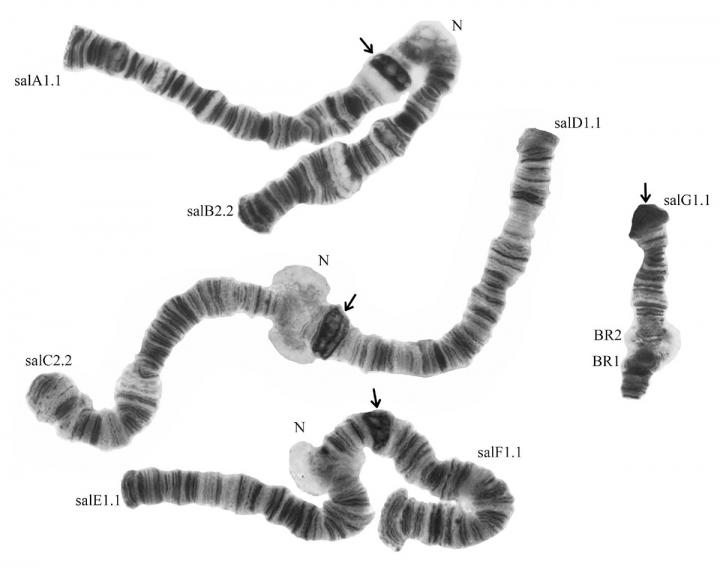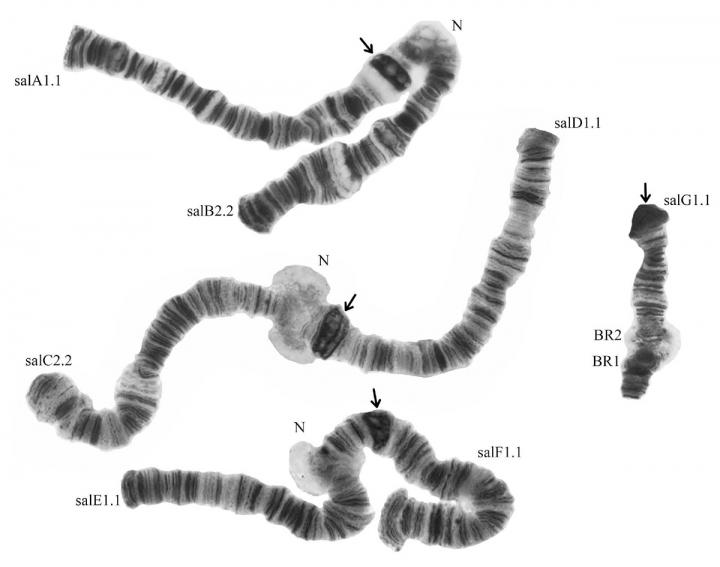
Credit: Dr Mukhamed Karmokov
From a geographical point of view, the Caucasus is far from an island or even a peninsula, being a relatively big mountainous region appearing as a fence at the border of Europe and Asia, situated between the Black and the Caspian seas. However, a study into the chromosome structure of mosquito larvae of the species Glyptotendipes salinus, living by a saltwater lake in the foothills of the Caucasus, suggests that the region could be imagined as an "island" in the "sea" of steppes.
Scientists Dr Mukhamed Karmokov, Tembotov Institute of Ecology of Mountain territories, Russian Academy of Science, and Dr Azamat Akkizov, Institute of Biomedical Problems, RAS, and Center of Medico-Ecological Researches, have their paper, where they describe the Caucasian population of the species, published in the open access journal Comparative Cytogenetics.
Earlier, it has been known that in the Tambukan Lake, located at the foothills of the Caucasus Mountains, lives at least one of the representatives of the genus Glyptotendipes, more precisely, the species G. salinus. Actually, the process of studying the fauna of the genus in the Caucasus region has just began and many questions have remained unclear.
During their research, the authors collected a sufficient amount of larvae of G. salinus that made it possible to study the chromosome structure, rearrangements and peculiarities of the Caucasian population of the species. In addition, the authors tried to understand how the population relates to the previously studied ones, living in the Altai region of Russia and Kazakhstan.
Researchers found interesting, some of them even striking, peculiarities in the chromosome structure and morphology of the larvae from Caucasus. Namely, they found four new chromosome rearrangements, likely unique for the Caucasus. Also, some of the chromosome characters were most similar to the mosquitoes from Altai, while others — to the population in Kazakhstan. The most curious difference of the Caucasian larvae in comparison to data from earlier studies was that they were twice as short.
In conclusion, the authors note that from the obtained data it could be deduced that that the Caucasian population had undergone a significant divergence, or even that it represents a subspecies.
Also, it turns out that the Caucasus itself is a relatively isolated and complex region in terms of microevolution. "The Caucasus, in some sense, can be imagined as a relatively isolated territory, a special place, where evolution has made some unexpected twists," they say.
###
Original source:
Karmokov MKh, Akkizov AY (2016) Karyotype characteristics, larval morphology and chromosomal polymorphism peculiarities of Glyptotendipes salinus Michailova, 1983 (Diptera, Chironomidae) from Tambukan Lake, Central Caucasus. Comparative Cytogenetics 10(4): 571-585. https://doi.org/10.3897/compcytogen.v10i4.9400
Media Contact
Dr Mukhamed Karmokov
[email protected]
@Pensoft
http://www.pensoft.net




